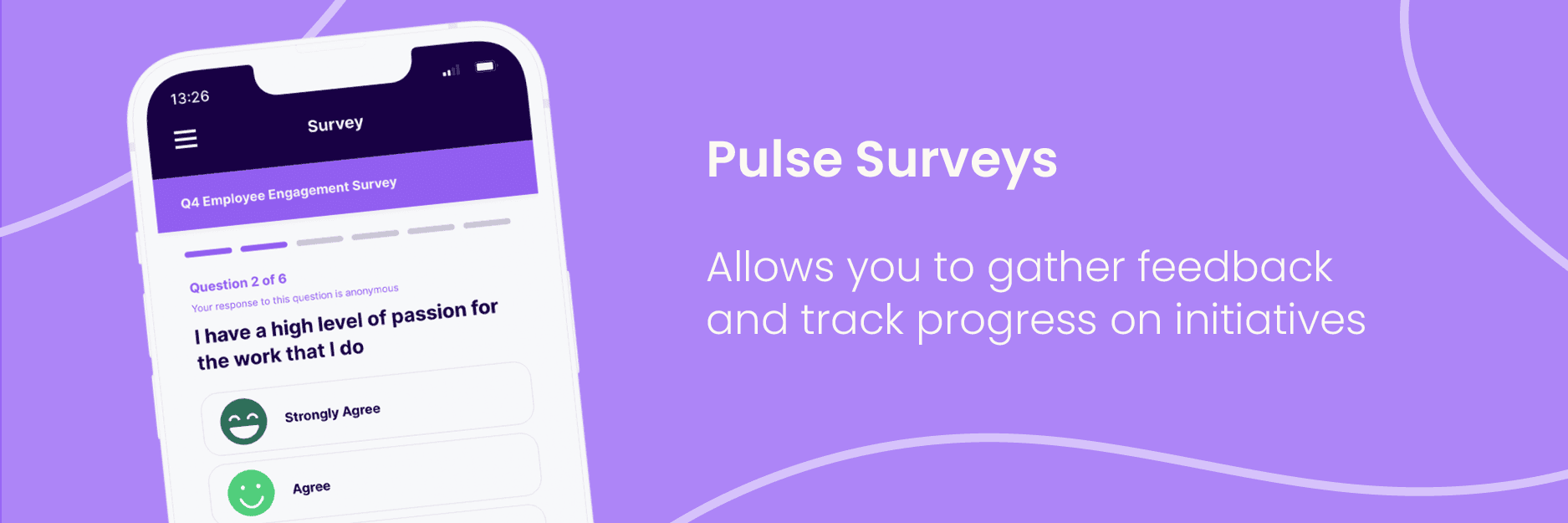4 Ways To Continually Measure Your Internal Communications

Caitlin Kirwan
External Contributor - Internal Comms & Engagement Expert
16 May 2023

We’ve all heard how important it is to continually measure your internal communications, but information on the how, the why, or the when isn’t so easy to come across. Caitlin Kirwan is here to help.
It can be easy for measurement to fall by the wayside when we feel as though we’re working at a million miles an hour and jumping from one project to the next.
Trying to juggle the needs of different stakeholders, manage projects and keep day-to-day comms activities afloat doesn’t always leave space to pause and review how effective each communication has been. But without this all-important reflection, we end up wasting time and budget on initiatives or channels that might not be working for audiences or achieving the communication objectives.
This blog explores the importance of continuous measurement for internal comms, then jumps into four easy ways to practice it within your organization. Let’s go!
Why measure your internal communications?
Measuring your internal comms on an ongoing basis enables you to build a comprehensive understanding of what works, and what doesn’t work. It provides you with the knowledge and understanding to build more effective and targeted campaigns that ensure the objectives are met.
Let’s take a look at some of the benefits.
Understanding your return on investment
The need to provide evidence of return on investment to leaders was the most common objective for IC measurement across organizations of all sizes in 2023, according to Gallagher’s State of the Sector report.
Can you justify allocating 10 hours of your time each month to a news round-up that is only read by 5% of employees? Or spending 10% of your annual IC budget on a high-quality video, when the last video you published was only watched by 7% of employees?
Spend your budget wisely, and treat it as if it was your own money. Unless you’re a shopaholic, of course.
Even if you had unlimited time and money at your fingertips (we can all dream!), you would still need to understand the ROI of each channel, campaign, or initiative to steer you in the right direction.
Informing communications strategy and planning
The knowledge and insight you gain from measurement data can become your superpower.
Whether you’re working on your overarching IC strategy for the year or drawing up a comms plan for a change program, a solid understanding of the formats and channels that achieved the best engagement in the past will become the greatest tool in your arsenal.
Having hard evidence of the efficacy of previous comms efforts is also incredibly helpful in helping you to become a trusted advisor to senior leaders. Speaking to the data enables you to be upfront and straightforward with leadership teams, which gives them a realistic view and allows you to guide and advise.
Driving engagement & alignment with business objectives
Effective internal communication goes both ways, and listening to employee feedback lets you continuously assess how messaging has landed. Regular, focused listening activities result in more precise and valuable insights. And research shows that employees who feel they are being listened to are five times more likely to perform at their best.
Regularly pausing to review feedback and channel efficacy also gives you an opportunity to constantly check your alignment with the overall business objectives. It can be easy to get swept up in an exciting new comms campaign or platform launch, but it takes discipline to continually refer back to the organization’s strategy and check your alignment. When you achieve organizational alignment, employees right across the organization have a shared purpose and vision.
4 ways to continually measure your internal communications
We’ve talked about why continuous measurement is so important, but we promised some practical advice, so let’s move on to how to do it.
Measuring the success of your internal communication efforts does not need to be complicated or time-consuming. And it’s not just about formal metrics, company-wide surveys, and annual comms audits. The best continuous measurement for internal comms takes a holistic view of all different kinds of feedback, capturing the full story and building a bank of useful data.
It can be hard to know where to start and what to measure, so here are four different ways to measure your internal communications and start building that holistic view.
1. Metrics
Let’s start with the hard data. The metrics are the outputs of your internal communications, measuring the reach of messaging.

Tracking things like email engagement rates, clickthroughs, intranet metrics, video views, and event attendance enables you to identify trends that will inform any tweaks to your approach. We suggest collating a monthly and quarterly pack to highlight the efficacy of different channels, timings, and content. Our advanced content analysis features make this measurement incredibly easy by automatically tracking and reporting content reach and engagement. No spreadsheets required!
While measuring the reach of communications provides invaluable data to help you understand channel efficacy and ROI, it’s incredibly important to measure outcomes in addition to outputs.
2. Formal feedback
Measuring quantitative data alone won’t give you the full picture. You need to track qualitative data from across the organization to truly understand how your internal communication is performing against objectives.
The feedback received through channels such as employee surveys and exit interviews is gold. It allows you to review employees’ understanding of, and alignment with, business objectives. It also shows if people feel they are being kept in the loop with important updates and if they are being listened to.
The opportunity to segment the data is also invaluable, particularly in larger organizations. It may reveal a need for more targeted communications to specific groups of employees, or even highlight the requirement for manager communication training within a particular department.
All of this juicy data usually sits within the remit of HR, so building and maintaining strong working relationships with HR colleagues is key.
3. Informal feedback
Tracking informal feedback is just as important as the formal side of things. By this, we mean employee comments, emails in your comms mailbox, comments on intranet posts, and employee sentiment. This kind of measurement combines both reach and understanding, helping shed light on some of those things that are tricky to quantify.
This might be something as simple as ‘walking the floors’ of a head office building as a big announcement email is landing so that you can listen to reactions, or assembling representatives from different teams and locations to create an Employee Forum that shares feedback.
‘Employee listening’ is a top IC trend in 2023, and it’s important to stay close to department leaders and key stakeholders to continually ask for feedback and understand the sentiment of their team. Are their team members informed, are they engaged? Are they telling you that something is missing? Do they see how their work connects to the organization’s strategy and business objectives?
4. Pulse surveys
Last but certainly not least, a regular IC-owned pulse survey is something that all organizations should consider introducing. The frequency of these mini-surveys allows you to gather ongoing feedback and track progress on initiatives in real time.

Pulse surveys are short and focused. Sticking to just a couple of questions enables you to run the pulse every two to three weeks without giving employees survey fatigue. And not every pulse needs to be shared company-wide; there is value in selecting a representative sample of the workforce for each pulse.
Do managers feel confident and well-equipped to communicate effectively? Do employees believe that they are receiving the information they need? Do the results of the two pulse surveys correlate? The data you’ll receive from these pulse surveys is just as valuable as formal feedback, but the increased frequency allows you to adapt and respond with more agility.
Jumpstart your measurement with Workvivo’s workplace insights
Our workplace insights features provide access to all of the tools you need to measure reach, understanding, and engagement across your organization.
With the right tools, enthusiasm, new-found knowledge, and coffee (it’s definitely a requirement for us…), you’ll be expertly measuring your internal comms in no time!
By Caitlin Kirwan
Caitlin Kirwan is a communication and engagement professional with over 10 years of experience leading internal communications. Since launching her career with BMW in 2012, she has managed national and global internal comms and engagement programs across multiple sectors for organizations including Deloitte, PayPal, and DAS.

